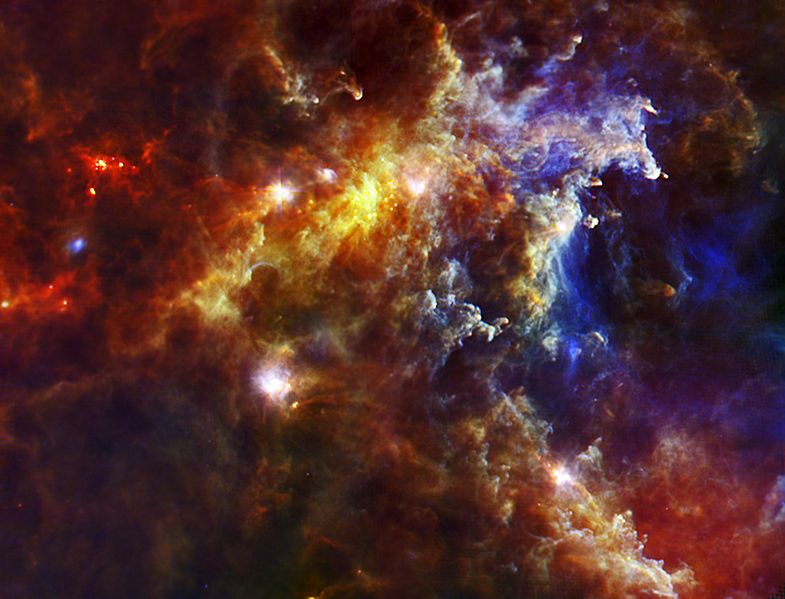Image: Embryonic Stars in the Rosette Nebula

Description: This image from the Herschel Space Observatory shows most the cloud associated with the Rosette nebula, a stellar nursery about 5,000 light-years from Earth in the Monoceros, or Unicorn, constellation. Herschel collects the infrared light given out by dust. The bright smudges are dusty cocoons containing massive embryonic stars, which will grow up to 10 times the mass of our sun. The small spots near the center of the image are lower mass stellar embryos. The Rosette nebula itself, and its massive cluster of stars, is located to the right of the picture. This image is a three-color composite showing infrared wavelengths of 70 microns (blue), 160 microns (green), and 250 microns (red). It was made with observations from Herschel's Photoconductor Array Camera and Spectrometer and the Spectral and Photometric Imaging Receiver instruments. Herschel is a European Space Agency cornerstone mission, with science instruments provided by consortia of European institutes and with important participation by NASA. NASA's Herschel Project Office is based at NASA's Jet Propulsion Laboratory. JPL contributed mission-enabling technology for two of Herschel's three science instruments. The NASA Herschel Science Center, part of the Infrared Processing and Analysis Center at the California Institute of Technology in Pasadena, supports the United States astronomical community. Caltech manages JPL for NASA. .
Title: Embryonic Stars in the Rosette Nebula
Credit: http://herschel/index.php?SiteSection=ImageGallery&ViewImage=nhsc2010-004a
Author: ESA and the PACS, SPIRE & HSC Consortia
Usage Terms: Public domain
License: Public domain
Attribution Required?: No
Image usage
The following page links to this image:

